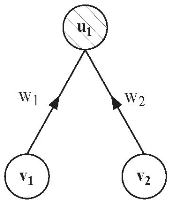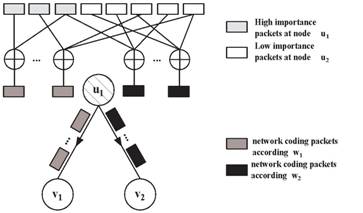We design a receiver-driven technique for prioritized video streaming in overlay networks. The technique is based on a novel Randomized Network Coding (RNC) approach for providing unequal error protection (UEP) to the packets comprising the video content. By taking advantage of the the unequal importance of the video packets for the overall reconstruction quality our network coding scheme provides optimized performance for streaming over bandwidth constrained lossy overlay networks. In our technique, based on the requested amount of data from each priority level, a network node accordingly combines packets associated with the different priorities and forwards them subsequently to its requesting neighbours in the network topology. The network coding operations at every node are formulated as a log-concave optimization problem, which is then solved with a greedy algorithm in only a few iterations. Our experimental results demonstrate that the proposed scheme permits respecting the relative priorities of the different packet classes. The scheme substantially outperforms baseline network coding techniques as well as solutions that employ rateless codes with built-in UEP properties for video streaming in overlay networks. The evaluation provides evidence of the substantial robustness of our scheme in a variety of transmission scenarios.

(a)

(b)